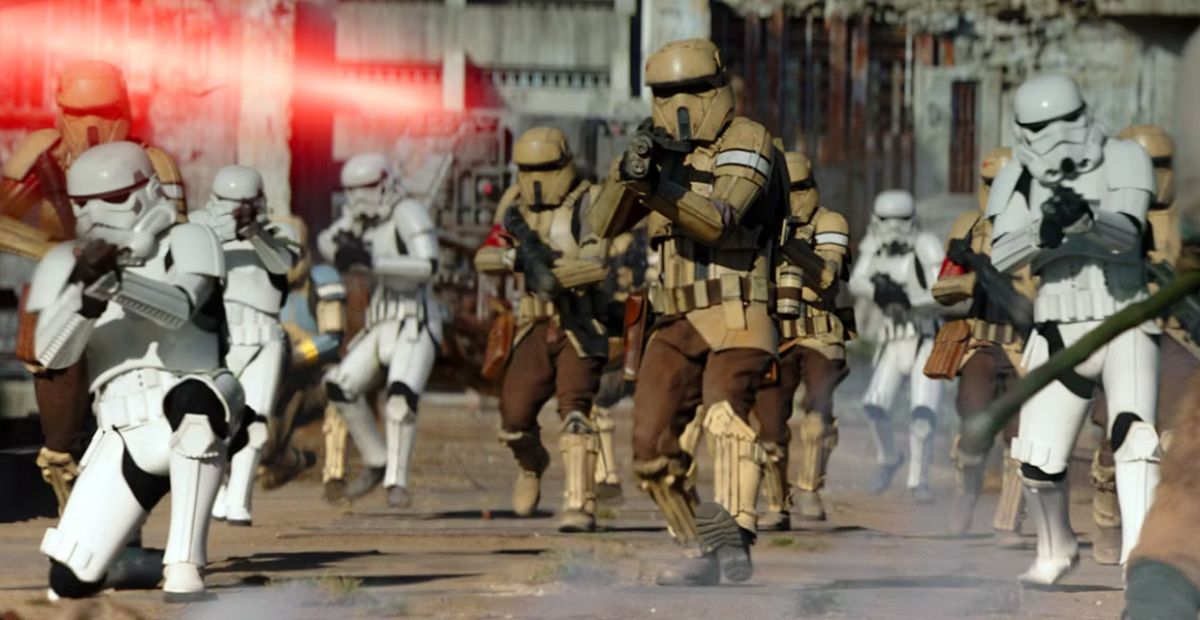I was rewatching some Star Wars scenes the other day and noticed something:
Why do we keep seeing regular stormtroopers thrown into battles alongside super-specific units like snowtroopers or shore troopers—even when the environment clearly favors one over the other?
Stormtroopers Are the Backbone While Specialist Troopers Just Support
The Galactic Empire’s military structure treats standard stormtroopers as the default fighting force. They’re trained for general-purpose missions and can be rapidly deployed across almost any theater. That’s why they show up everywhere—from space stations and city patrols to jungles, deserts, and snow-covered battlefields. They’re not the most optimized for every climate or situation, but they’re built to be “good enough” almost anywhere.
In contrast, environment-specific troopers like snowtroopers, sandtroopers, and shoretroopers are deployed for more targeted, situational roles. Their gear is tailored to the environment—Snowtroopers wear insulated armor with heating units, sandtroopers are equipped with cooling fans and backpacks for long-range desert ops, and shoretroopers have lighter armor for humid, coastal patrols. These specialized units aren’t as common because they’re expensive to outfit and train—and because their use cases are narrower
For example, during the Battle of Hoth in The Empire Strikes Back, we see snowtroopers used to storm Echo Base because the extreme cold would be punishing for regular stormtroopers. But standard stormtroopers are still seen aboard the Star Destroyers or inside the AT-ATs—where the insulation isn’t as much of an issue.
Another example is A New Hope, where sandtroopers patrol Tatooine looking for the stolen Death Star plans. Their armor allows them to handle the heat and carry extra survival gear while combing the desert. It wouldn’t make sense to send in normal stormtroopers for extended desert tracking—they’re simply not equipped for it.
Why Stormtroopers and Specialists Get Mixed in the Field?
By now, we understand that environment-specific troopers are stationed where their gear gives them the advantage. So why do stormtroopers still show up alongside them, even when their gear isn’t suited for the terrain?
One possible answer is that stormtroopers act as the Empire’s go-to reinforcements—the ones you call in when a situation escalates. Think of them as a flexible, all-purpose infantry force. They might not be optimized for a specific climate, but they’re ready to deploy fast and in large numbers.
It’s also worth remembering that the stormtrooper corps functions much like a marine force. Most are garrisoned aboard Star Destroyers or stationed on mobile bases, waiting to be sent in during planetary invasions, surprise attacks, or urgent defenses. They’re not tied to a single location—they go where the Empire needs boots on the ground.
We see this dynamic play out clearly during the Battle of Scarif. Shore troopers handled routine security at the Imperial base—posted at checkpoints, walking patrols, and maintaining order on the beach and landing pads. These soldiers were already stationed there before the attack began, acting more like base guards than frontline troops.
We also see this layered deployment structure in Andor, particularly during the tense standoff in Ferrix. Early on, local security and corporate enforcers are the ones handling patrols and civilian control—but once the Empire officially takes over, stormtroopers arrive and completely change the tone. These aren’t specialists suited for urban policing—they’re shock troops, sent in to tighten control and project fear.
By the time of Maarva Andor’s funeral, the stormtroopers are standing on rooftops, lining the streets, and aiming their rifles at unarmed civilians. It’s a textbook show of force. But look closely—while stormtroopers dominate the main roads, Death Troopers are positioned close to the ISB agents, acting as elite protection detail. Again, we see how different units are grouped: the specialists handle targeted roles (bodyguarding high-value Imperial officers), while the stormtroopers bulk up the general presence and respond to unrest.

